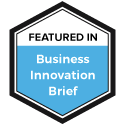
When Generosity Breeds Animosity: Understanding and Overcoming Hidden Resentments
When Generosity Breeds Animosity: Understanding and Overcoming Hidden Resentments
Have you ever felt a twinge of animosity toward someone who seems to be constantly giving, whether through acts of kindness, wisdom, or leadership? Perhaps you’ve encountered a colleague who uplifts others selflessly, or a leader who embodies vulnerability, and collected decision-making while you wrestle with internal frustrations. If this has ever struck a nerve, you’re not alone.
What might surprise you is that this animosity often reveals more about us than about the person we resent. It’s an unspoken truth in both personal and professional spheres: sometimes, the presence of another’s generosity exposes the areas in which we feel inadequate or unprepared. Instead of embracing this as an opportunity for growth, we may unconsciously lash out, diminishing the very qualities we admire in others. But why does this happen? And more importantly, how can we overcome it?
The Hidden Triggers: When the Mirror Feels Uncomfortable
Deep down, resentment often stems from a subconscious recognition that another person’s generosity or strength highlights something we either lack or struggle to cultivate within ourselves. It’s as if they are holding up a mirror that forces us to confront our own fears, insecurities, or shortcomings.
For example, imagine a colleague who effortlessly leads with compassion and clarity, yet you find yourself feeling annoyed by their presence. Rather than acknowledging the discomfort as a signal to explore your own leadership capabilities, you might rationalize your frustration by labeling them as self-righteous or seeking attention. This is a defense mechanism—one designed to protect the ego from the discomfort of self-awareness.
Another common scenario plays out when a person constantly gives without expecting anything in return. Instead of being inspired, some may feel threatened by this level of selflessness. Why? Because it disrupts an internal narrative that says success and influence are built on personal gain rather than service. If we were raised or conditioned to believe that self-preservation comes before generosity, encountering someone who disproves this belief can create internal conflict.
The Impact of Change: Why Resistance Feels Safer
Beyond individual interactions, this dynamic becomes even more pronounced when generosity manifests as a shift in leadership or organizational structure. When a leader introduces decentralized or self-managed principles into a traditionally hierarchical environment, those accustomed to power structures may feel as though they are losing control.
In these situations, resistance emerges not because the new approach is ineffective, but because it disrupts the comfort of familiarity. The subconscious mind equates change with uncertainty, and uncertainty can trigger fear. This fear often masquerades as animosity toward the person leading the transformation, making them a convenient target for criticism.
Leaders who champion these shifts must recognize that resistance isn’t personal—it’s psychological. People aren’t necessarily rejecting the leader; they are rejecting the discomfort of growth. Understanding this can help navigate animosity with patience and strategy rather than frustration and force.
Recognizing the Pattern: The First Step to Transformation
Breaking free from these patterns starts with awareness. The next time you feel irritation or resentment toward someone who is giving, leading, or challenging the status quo, ask yourself:
- What about this person’s behavior is triggering me?
- Is this an insecurity or limitation within myself that I haven’t yet acknowledged?
- Am I resisting growth because it feels uncomfortable or threatening?
- What can I learn from this moment, and how can I apply it to my own personal or professional development?
Self-inquiry is a powerful tool. It shifts the narrative from victimhood (“they are making me feel this way”) to personal responsibility (“I am feeling this way because something inside me needs attention”).
Transforming Animosity into Growth: The Path Forward
Once we recognize these patterns, the next step is to actively transform animosity into a catalyst for growth. Here’s how:
Practice Gratitude Over Comparison
Instead of focusing on what you lack, appreciate the qualities you admire in others. Gratitude reprograms the mind to see abundance rather than scarcity. When you recognize someone’s generosity, rather than envying it, ask yourself: What would it look like for me to develop this same generosity in my own way?
Turn Resentment into Inspiration
Use your emotional reactions as guideposts. If someone’s confidence, leadership, or kindness triggers discomfort, see it as a roadmap to your next level of growth. What steps can you take to develop that trait within yourself?
Foster Empathy and Understanding
Recognize that everyone carries unseen struggles. The person you resent for being “too generous” or “too composed” has likely faced their own battles to get to where they are. Seeing their journey with empathy rather than judgment allows you to connect rather than resist.
Embrace Change as a Personal Challenge
If organizational shifts or new leadership styles trigger feelings of loss or resistance, reframe the change as a challenge rather than a threat. Ask yourself: How can I adapt? What new opportunities might arise from this shift? Growth is rarely comfortable, but it is always worth it.
Final Thoughts: Moving from Resistance to Empowerment
When we learn to recognize and dismantle the hidden sources of animosity, we unlock the potential to become more self-aware, adaptive, and emotionally intelligent. The next time you feel resentment toward a leader, colleague, or even a friend, pause. Take a moment to reflect. What if the very thing you resist is the key to your next breakthrough?
By shifting our perspective, we can turn what once felt like a threat into a valuable lesson. Instead of pushing away the people who challenge our comfort zones, we can choose to embrace their presence as a powerful force for our own transformation.












Recent Comments